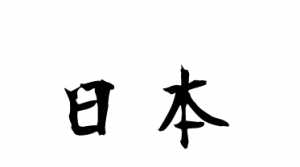382,461 total views, 2 views today
Japanese is an East Asian language, spoken by approximately 125 million people across the world. It is the national language of Japan, but it is spoken in Korea, the United States, and many other places as well. If you are a native English speaker, Japanese will be very different. It will require practice, but with a little effort, you can become an effective Japanese speaker.
1 Learn Hiragana.

Hiragana is the Japanese alphabet. It is comprised of 51 phonetic characters, and each character stands for exactly one sound. (This is different from English in which one letter may sound different in different contexts). Once you know Hiragana, you will know how to pronounce any word in Japanese. Begin your Japanese journey by studying and memorizing these characters.
The minimal way to learn Japanese Hiragana : Easy Hiragana App (iOS)
2 Learn some Katakana.

Katakana is a series of characters used to stand for loan words or non-Japanese words (such as hot dog or internet). You will want to learn the Katakana terms for English words you are likely to use.
3 Learn Kanji.

Kanji are typographic Chinese symbols that are used to stand for basic words and phrases in Japanese. Whereas Hiragana symbols are more like English letters (depicting simple sounds), Kanji symbols are used to depict complete words. Knowing some basic Kanji will enable you to understand and speak basic Japanese.
Learn Japanese Kanji by using flashcards. Kanji Flashcards (iOS)
4 Avoid relying on Romaji.
Romaji is a system of using English letters to spell Japanese words. Romaji can be useful for learning initial key phrases, or for online communications. If you rely too much on Romaji, however, you will never move on to a genuine grasp of the language. Focus your study on Hiragana, Katakana, and some Kanji.
5 Practice grammar.
In order to learn Japanese grammar, you’ll need to try to forget everything you already know about grammar. Don’t apply the rules and concepts of your native language to Japanese. Instead, try to take the rules of Japanese grammar at face value.
- Obtain a Japanese grammar workbook and begin following the lessons.
- Locate free online resources to study Japanese grammar.
6 Learn some key phrases.
Learning a few key phrases will allow you to begin practicing, and may allow you to enjoy some casual conversation with a Japanese speaker. Although Romaji should not be relied upon, using Romaji to learn these basic phrases can work as a good jumping off point.
- Hello – Kon’nichiwa
- Goodbye – Sayonara
- I’m fine, thanks – Watashiwa genki desu. Arigato.
- Thank you very much – Domo arigato gozaimasu
- Nice to meet you – Hajime mash’te